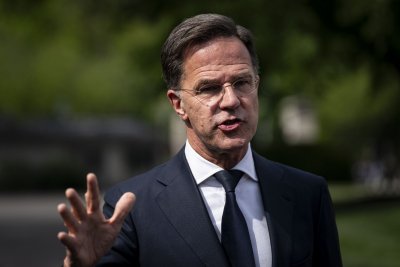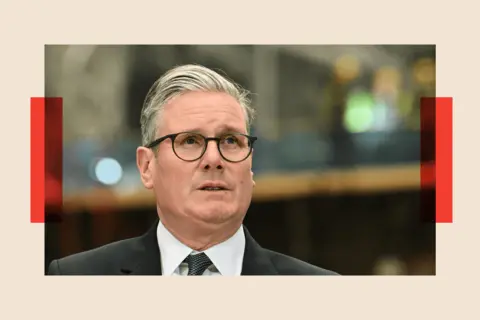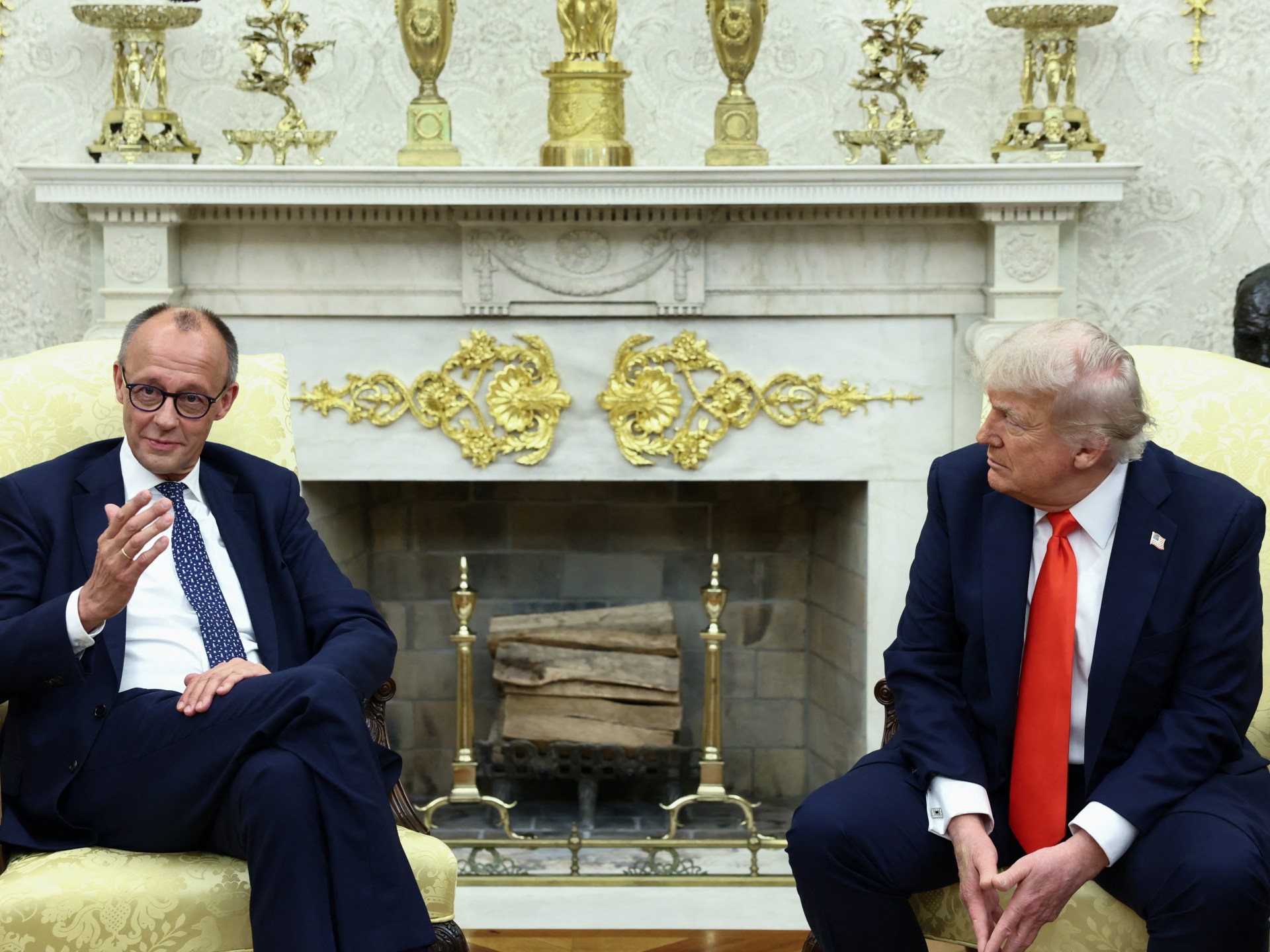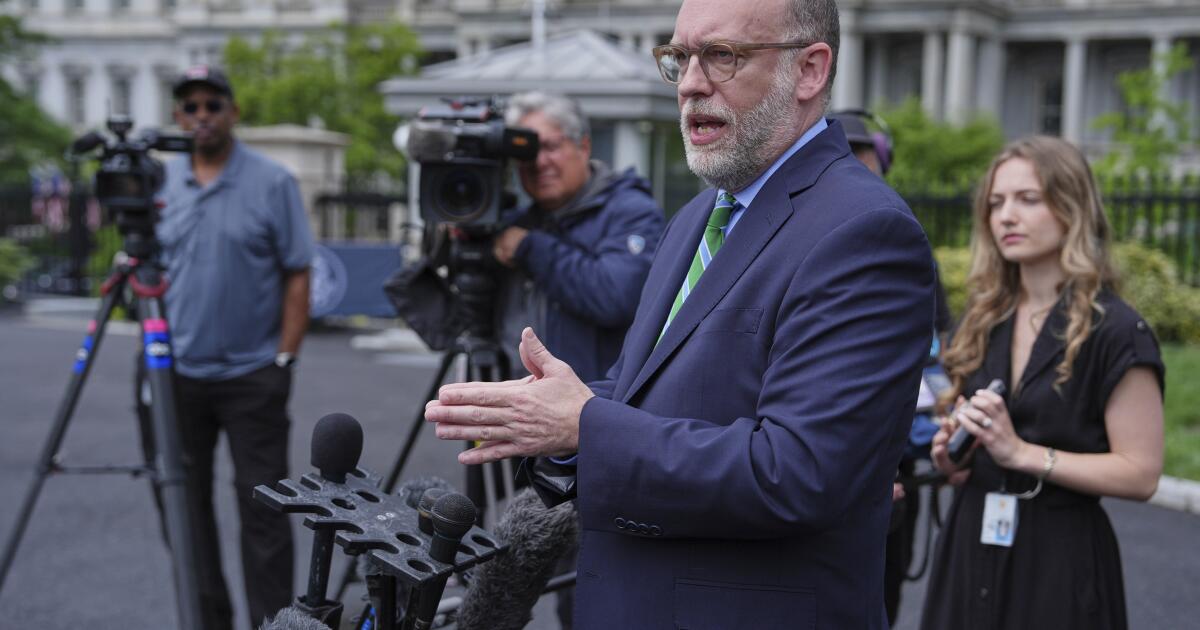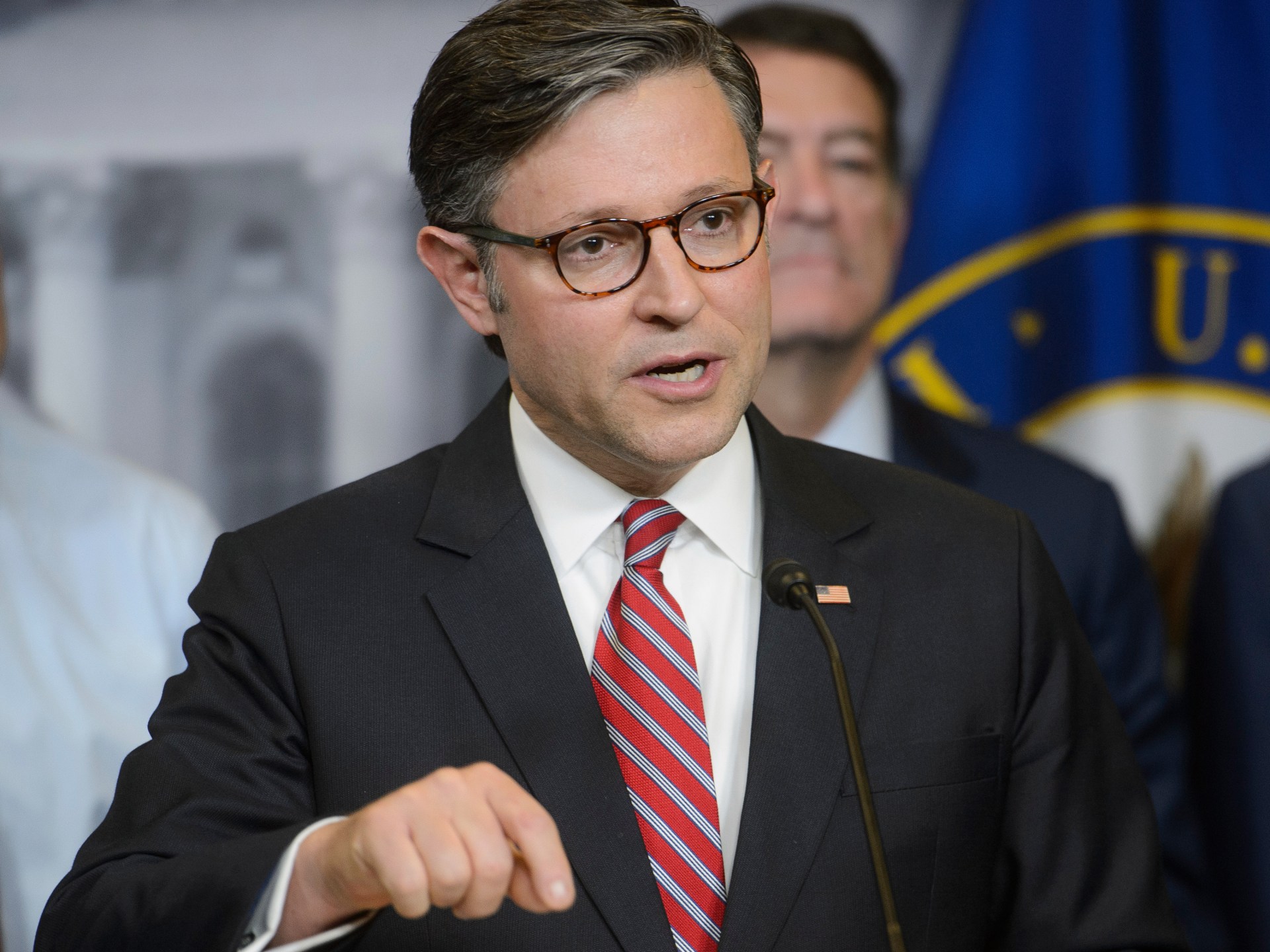SACRAMENTO — After nearly seven years of hibernation, a ballot initiative overwhelmingly approved by the voters is emerging from its slumber to challenge the way California governments spend the taxpayers’ money.
Designed by tax crusader Paul Gann to limit public spending, Proposition 4 was largely forgotten after it won passage in 1979. But now the measure’s spending curbs are on the verge of taking hold–offering the prospect of a tax rebate and the threat of deep program cuts.
When the new fiscal year begins July 1, the state will be within sneezing distance of the measure’s spending limit–just $95 million below the lid in a budget of nearly $37 billion. State analysts expect the limit to take effect by 1987, preventing the state from spending an estimated $900 million it will collect.
Possible Tax Refund
The awakening of the initiative has prompted Gov. George Deukmejian to suggest the possibility of a tax refund.
But others fear that the measure will ultimately put the brakes on economic growth in California by handicapping government’s ability to provide highways, schools and other necessary services.
Major business organizations, the education establishment and lobbyists for local governments have already begun searching for ways to divert money that would otherwise be returned to the taxpayers.
Three business groups that originally helped draft the initiative–the state Chamber of Commerce, the California Assn. of Realtors and the California Taxpayers Assn.–are leading a drive to alter Proposition 4 and free highway construction from the spending restriction.
And many of the state’s leading politicians, including state Supt. of Public Instruction Bill Honig, Los Angeles Mayor Tom Bradley and Assembly Speaker Willie Brown (D-San Francisco) have quietly come to the conclusion that the limit must be modified or repealed.
“Eventually, I think you’re going to have to repeal it because it’s a death sentence for the schools,” Honig said. “It will put the state in such a straitjacket that you’ll end up with a second-rate state–and I don’t think the people will stand for it.”
Proposition 4 began with a simple idea: Put a specific limit on the rate of growth in government spending.
Gann’s measure followed on the heels of Proposition 13, the 1978 property tax-cutting initiative and was dubbed “the spirit of 13” by its backers. The constitutional amendment drew a broad range of supporters that included then-Gov. Edmund G. Brown Jr.
Overwhelming Approval
Voters, outraged by high taxes, double-digit inflation and dollar-a-gallon gasoline, approved the initiative with an amazing 74% of the vote.
Now, all levels of government–the state, counties, cities, school districts and special districts–can increase spending at a pace governed by a formula based on population growth and either the national inflation rate or the increase in per-capita income–whichever is lower.
The rate of inflation is calculated by using the U.S. Consumer Price Index.
Revenues collected above the limit must be returned to the taxpayers within two years, unless voters agree to raise the lid for a four-year period.
The measure is aimed primarily at government’s ongoing operations, including such programs as education, health, transportation, welfare, prisons, parks and road and school construction.
A variety of exceptions were built into the initiative that provide some protection for long-term capital improvements and programs that directly pay for themselves. Some sources of income are not subject to the restraint, including bonds, tidelands oil revenues, user fees collected to pay for a particular service and proceeds from the sale of land. Certain state expenditures also are exempt, including unrestricted payments to local governments, interest payments on loans and spending required by the federal government or a court.
In 1979, state analysts believed it would be many years before the state ever reached its spending restriction. But during the last several years, California has enjoyed both low inflation and economic growth, a combination that has pushed state revenues to the limit.
Lack of Flexibility Cited
“Over a period of four to five years, the limit will rise at a rate well below the growth of the state’s economy,” said former Legislative Analyst William G. Hamm. “The state would be put in the position of having to reduce services. Ultimately, the limit is just not flexible enough to stand up over a long period of time.”
Since Proposition 4 was approved, public resentment toward state taxes appears to have cooled off somewhat. A Los Angeles Times Poll in 1983 found that 71% of those surveyed said they were either satisfied or neutral about the level of California taxes they were paying.
During the last several years, 10 cities and counties have reached their own spending constraints and asked the voters to raise their limits. In all but one case, the voters agreed, local government officials report.
In a 1984 election in Santa Monica, for example, a measure to hike the spending lid by $4 million to pay for more police won 74% of the vote while a second measure to raise the cap by $3.5 million for public works won 69%.
Paradoxically, the initiative spawned during former Gov. Brown’s “era of limits” may make his successor, George Deukmejian, its biggest beneficiary.
Should the Republican governor win election to a second term in November, Proposition 4 offers him a golden opportunity to preside over a politically popular tax refund.
The governor hinted at that prospect earlier this year.
Speaks of Refund
“That might be a good possibility of happening,” he told reporters. “If we got more revenue in than we could legally spend, it would have to be returned. . . . You’re not going to be able to expand and have a mushrooming bureaucracy.”
Deukmejian, who has enlarged the state budget each year of his first term, could accomplish his longtime goal of cutting back the size of government. Armed with the Gann limit, he would have a powerful tool at his disposal to block legislative spending proposals and reduce social programs popular among Democrats.
At the same time, the limit would create a sizable surplus that could not be spent. This would allow the governor to propose a rebate without incurring criticism from the Legislature that he was hoarding funds needed for programs and services.
“We would enjoy the people’s will being carried out,” said Steven A. Merskamer, Deukmejian’s chief of staff.
Lt. Gov. Leo McCarthy, who was a leading advocate of Proposition 4, worries now that the state could cut services and give money back to the taxpayers at the same time that it is unable to make up for large reductions in federal aid resulting from the Gramm-Rudman deficit-cutting measure.
A tax rebate could take many forms–especially since there is no requirement that the people who paid the taxes are the same ones who would receive a refund.
Selected Tax Breaks
The governor and lawmakers could use the opportunity to give tax breaks to selected groups, such as the multinational corporations that have long been seeking elimination of the unitary tax, one legislative staff member suggested.
Legislators have also begun looking at the possibility of developing creative methods of financing to make up for cuts in some state programs. For example, the state could offer tax credits to developers who carry out projects deemed desirable, such as construction of schools or low-income housing.
Already, business leaders, educators and local officials are angling for ways to divert money from a possible refund by taking advantage of loopholes in Proposition 4.
The proposal that has advanced the furthest is a constitutional amendment authored by Sen. John Foran (D-San Francisco) that would remove road and highway construction expenditures from the limit by declaring that the gasoline tax is a user fee, not a tax. The measure, which would be placed before the voters in November, cleared the Senate and is pending in the Assembly.
Deukmejian, in a rare break with the business community, opposes the measure.
“I strongly supported Proposition 4,” Deukmejian said in a speech last week. “I believe its limit on government growth is very reasonable, and I don’t agree with those who say we should do away with it so taxes can be raised.”
Gann said he also is against the Foran bill “simply because it kicks a hole in 4.”
Key Supporters
Among the bill’s backers are three people who helped Gann draft Proposition 4 in 1979: Dugald Gillies, lobbyist for the California Assn. of Realtors; James P. Kennedy, vice president of the California Chamber of Commerce, and Kirk West, then executive vice president of the California Taxpayers Assn. and now president of the Chamber of Commerce.
“Everything is made to be altered,” Gillies explained. “Even the 10 commandments are altered by interpretation. The Constitution is altered by interpretation. Gann was meant to be dealt with in the same context. The flexibility was built right into it.”
Gillies argued that the Gann limit will not restrict growth in California because voters have the option of raising the spending lid. But he said the spending restraint should be altered to exclude highways because of a tremendous need for new roads around the state.
Education has become another rallying point for opposition to the spending restrictions.
Honig predicts that unless the Proposition 4 limit is altered, California’s drive to improve education will eventually come to a standstill. Although school districts may not reach their limits for at least a year, Honig said, the spending lid would eventually halt efforts to reduce class size and institute other reforms.
“It is very shortsighted to limit the growth of schools by an arbitrary limit of inflation plus growth,” Honig said. “If Gann cuts in, we’ll never catch up with other industrial states. That’s going to put us at a competitive disadvantage.”
Bradley, Deukmejian’s Democratic rival in the gubernatorial race, also cites the need for more spending on education as the primary reason to alter Proposition 4.
Popular Vote
“The problem we face particularly in the field of education indicates to me there is a need for either repeal or modification that must be put before the people,” the Democratic candidate said in an interview.
One suggestion that is gaining popularity among opponents of the limit is to leave the concept of the spending restriction intact while changing the formula for calculating the spending cap.
Instead of a formula that would use either the Consumer Price Index or per-capita income in calculating the spending limit, the idea is to use only California’s per-capita income. Advocates of this change say personal income is a better indicator of the state’s economic growth.
Among those calling for modification of Proposition 4 are the Capitol lobbyists for city and county government.
“This has the potential of being a hell of a lot more destructive for public services than Proposition 13,” said Larry Naake, executive director of the County Supervisors Assn. of California. “At the same time that we’re talking about not letting the state appropriate money, we’ve got counties that are going under.”
Naake and other local government officials have begun lobbying to get a share of the money that the state would be prohibited from spending on its own programs. Such transfers–allowed under Proposition 4 as long as lawmakers do not place restrictions on the way the money can be used–would then count against the limits of the jurisdictions that spent the money.
Limits Will Be Reached
But even with that money, most cities and counties will reach their own limits sooner or later. When that happens, some officials predict, they will be unable to provide basic services as well as those needed for economic development at the local level.
“It certainly does inhibit our ability to finance growth in certain situations,” said Kenneth J. Emanuels, lobbyist for the League of California Cities. “It’s anti-growth in terms of business development. It certainly is not the situation that was envisioned.”
Despite the widespread perception of problems with Proposition 4, most advocates of altering the measure expect that the spending limits will have to take hold before the public will be willing to make major modifications.
Many politicians are reluctant to predict the worst–recalling how wrong they were in making dire predictions of financial disaster if Proposition 13 passed.
“I think it’s hard to change something like Proposition 4 before the problem is at our doorstep,” Emanuels said. “In the past, we haven’t been persuasive when we predicted problems. We’re going to have to experience some of this before there’s a consensus.”




